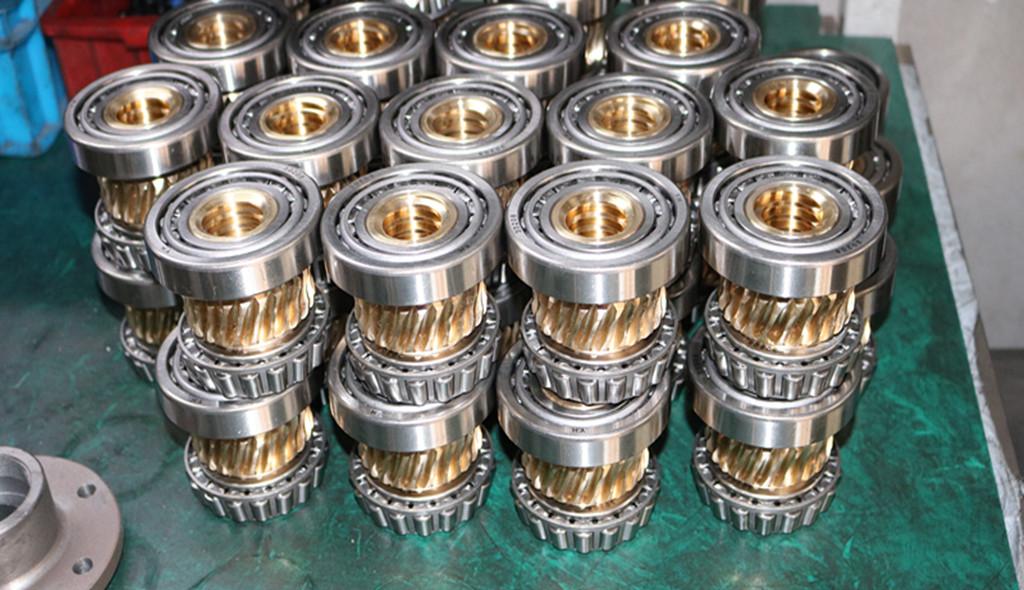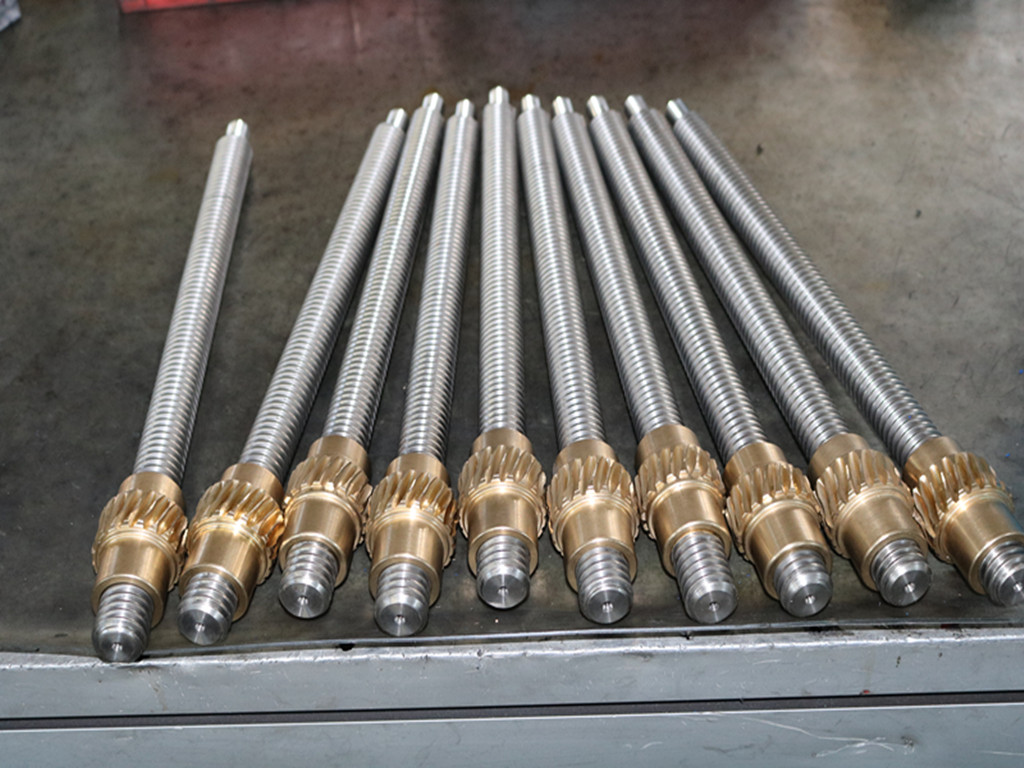
The gear ratio (also called the transmission ratio) of a worm gear screw jack refers to the ratio between the rotational speed of the worm and the rotational speed of the screw, usually expressed as the ratio of the worm's speed to the screw's speed. The gear ratio directly affects the speed and output torque of the screw jack.
Definition of Gear Ratio:
The gear ratio (Transmission Ratio) is the transmission ratio between the worm wheel and the worm, usually represented by the ratio of the number of teeth on the worm wheel to the number of threads on the worm. For example, if the worm wheel has 50 teeth and the worm has 10 threads, the gear ratio would be 5:1.
Impact on Speed:
The gear ratio determines the relationship between the rotational speed of the worm and the screw. The larger the gear ratio, the slower the worm's speed and the slower the screw's lifting speed. Therefore, a higher gear ratio will slow down the screw's movement, which is suitable for applications requiring precise control. A lower gear ratio will result in faster screw movement, which is suitable for quick lifting needs.
Impact on Torque:
The larger the gear ratio, the greater the torque transmitted from the worm to the screw. In cases of heavy loads, a larger gear ratio can provide higher output torque, allowing the jack to support heavier loads.
Low Gear Ratio (e.g., 1:1 or 3:1) typically provides higher speed but lower output torque, making it suitable for light load, high-speed applications.
High Gear Ratio (e.g., 10:1 or 20:1) provides greater torque, making it suitable for applications requiring higher load capacity and precision, but with slower speed.
Higher Gear Ratio (e.g., 20:1, 30:1):
Suitable for high-load, low-speed applications. Due to lower speed, it provides greater torque, making it ideal for heavy-duty equipment or precision-controlled applications, such as precision lifting platforms and large machinery.
Typical Applications: Lifting platforms, heavy-duty cranes, precision machinery.
Lower Gear Ratio (e.g., 3:1, 5:1):
Suitable for light-load, high-speed applications. Due to the smaller gear ratio, the speed is higher, but the torque is lower, making it suitable for applications that require faster movement but are not designed for heavy loads.
Typical Applications: Light-duty conveyor systems, automated production lines, etc.
Worm gear screw jacks often feature a self-locking function, meaning that when the worm stops turning, the friction generated by the engagement between the worm and the worm wheel prevents the load from automatically sliding down. When the gear ratio is larger, the self-locking ability is stronger, because the engagement angle between the worm and the worm wheel is greater, making it more difficult for the load to move in the opposite direction.
